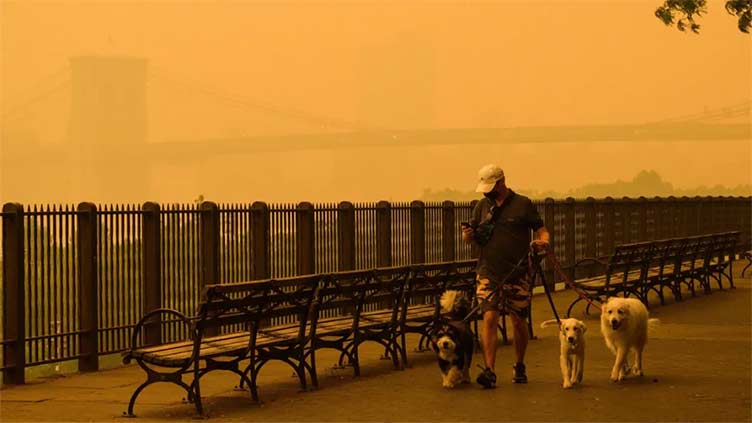Can you exercise outside in wildfire smoke? How to tell if the air is safe

To figure out when it's safe to go outside, experts say people should check their local AQI levels
ISLAMABAD, (Online) - A clear, blue sky is becoming a rarer sight for people living on the east coast of the U.S. with New York seeing particularly smokey skies due to massive wildfires in Canada.
While inside you can run an air purifier and keep windows show to minimize the amount of pollutants you’re exposed to. But if you want to be outside and particularly exercise, while outdoors, you’ll need to carefully look at the Air Quality Index (AQI).
To figure out when it’s safe to go outside, experts say people should check their local AQI levels, a measurement that tells us what the current nearby air quality is like.
For many, reading and interpreting AQI is a bit of a guessing game. The AQI scale ranges from 0 to 500 and includes different tiers associated with various health risks for different groups of people.
Scientists are still uncovering all the short- and long-term health issues that come with inhaling wildfire smoke, but there’s enough evidence that shows a strong link between air pollution and respiratory and cardiovascular health problems.
How poor air quality impacts our health
When wildfires ignite, they release tiny particulate matter called PM 2.5.
These minuscule particles hang out in the air, and when inhaled, can get lodged deep inside the throat and lungs, according to Dr. Stephanie Christenson, an assistant professor in the division of pulmonary, critical care, allergy, and sleep medicine at University of California, San Francisco.
When that happens, the particles can cause a lot of adverse effects on our health.
In the short term, people who inhale air with high PM 2.5 levels may experience difficulty breathing, a cough, runny nose, eye irritation, sore throat, and heart palpitations.
People with underlying health issues — like asthma, chronic obstructive pulmonary disease (COPD), or heart disease — have a higher risk, as PM 2.5 can cause direct injury to the airways and lead to a lot of inflammation, exasperating these conditions and sending some to the hospital.
EvidenceTrusted Source suggests prolonged exposure to wildfire smoke can up the risk of pregnancy complications like high blood pressure, gestational diabetes, low birth weightTrusted Source, and preterm birth.
Otherwise healthy people can feel the effects of the poor air quality, too.
“Even a normal person, if you have enough particulate matter in the air and are breathing enough in, you can get a lot of symptoms immediately or within hours to days,” Christenson said in an earlier interview.







